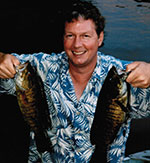Each summer, millions of migratory seabirds congregate in nesting colonies in Canada’s Far North — and each year professor Mark Mallory of Nova Scotia’s Acadia University follows them there and steals their eggs.
Not a lot of eggs, mind you; just enough to analyze for contaminants such as PCBs and DDT, mercury and other potentially toxic chemical compounds. Mallory, an expert on Arctic seabirds, has been doing this type of research in places such as Cape Vera on Devon Island, Nunavut, for the past 20 years. His findings contribute to a database stretching back to the mid-1970s, and provide vital information about the health of migratory birds and the surrounding marine environment.
“The Arctic is a sink for all these pollutants from the south,” he explains. “They get into the marine food chain starting with the smallest organisms, phytoplankton, then work their way up through zooplankton, then fish and finally the seabirds, which are apex predators.” At each step, the contaminants become more concentrated, which is why the eggs of seabirds reveal so much about the health of Arctic waters.
The good news, says Mallory, is that levels of PCBs and DDT in seabird eggs have dropped dramatically since the 1970s. Levels of mercury, however, continue to rise, as do so-called fluorinated polymers — biologically harmful chemicals used to manufacture everything from lubricants to fire retardants — though not yet at lethal or even sub-lethal levels.
That’s not the only alarming trend. The nutrient-rich but contaminated guano that washes off the nesting cliffs into adjacent ponds supports yet another food chain. “Insects that hatch from the sediment in the ponds are gorged upon by snow buntings, which are then preyed upon by ermine and fox,” says Mallory. “So you end up with these marine contaminants moving into the terrestrial food webs.” Which just goes to show how far reaching the impacts of potentially toxic chemicals are, and why Mallory’s research is crucial.
This is the latest in a continuing blog series on polar issues and research presented by
Canadian Geographic in partnership with the Canadian Polar Commission. The polar blog will appear online every two weeks, and select blog posts will be featured in upcoming issues. For more information on the Canadian Polar Commission, visit
polarcom.gc.ca.







